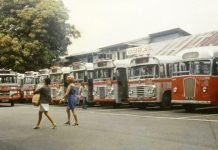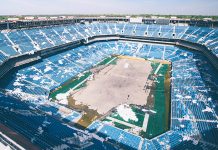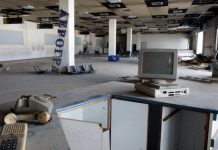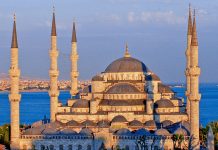The first editorial Photoshoot done inside Kochi Metro
Kochi Metro is a metro system serving the city of Kochi in Kerala, India. It was opened to the public within four years of starting the construction, making it the fastest completed metro project in India until the Lucknow Metro overtook it. The Kochi metro project is the first metro in the country which connects rail, road and water transport facilities.
Here’s the first editorial shoot done inside #KochiMetro. Take a look at industry’s new talent Parvatii Nair gracing metro interiors and train for the photoshoot. The photos were captured for Grihalakshmi magazine.
Photos – Jinson Abraham






Grihalakshmi is an Indian magazine published fortnightly by the Mathrubhumi group. As of December 2013, it is the fifth largest regional language magazine in India by circulation according to IRS Survey 2013, with average qualifying sales of 826,000 copies. A women’s magazine published in Malayalam, Grihalakshmi was launched in 1979 as a monthly publication. It became a bi-weekly in 2013. Grihalakshmi is owned and published by Mathrubhumi, and is based in Kozhikode.
Egis India was responsible for the design of the stations such as floors and doors, and the Indian Institute of Architecture (Kochi Chapter) developed the designs of the roof and the interior of the stations. The IIA presented the designs of 14 stations to the KMRL on 14–15 March 2014.
The interiors and exteriors of the Kochi Metro stations will be decorated with references to local culture. However, the traditional nālukettu architectural style was not structurally feasible. According to a KMRL official, “It [stations] will be designed in such a way that it reflects the Kerala style of architecture with each of the 22 stations reflecting a regional theme. … the stations will reflect an independent adaptation of the state’s culture to give it a distinct look”. KMRL officials stated, “Our effort is to highlight the uniqueness of the state, especially to outsiders, but the station buildings won’t be an exact replica of the Kerala model of architecture. The station designs are contemporary but inspired by socio-cultural themes. The kettuvalam or houseboat, for example, widely used in the backwaters of the state, will be the theme of one of the stations, bearing descriptions of how it is made with a model exhibited alongside.”
The Western Ghats that run along most of the Kerala-Tamil Nadu border forms a common design theme at all the stations. The design of each individual station is a variation on this common theme. Aluva station’s theme is Kerala’s natural beauty and the station’s interiors depict the Periyar and the other major rivers in the state. The walls of the Pulinchodu station feature flora and fauna of the Western Ghats. Kalamassery station depicts rare species of the mountain range. The theme of CUSAT station is the state’s maritime history, and that of Pathadipalam station is the fish of the Western Ghats. Spices of Kerala is the theme of the Edapally station, while the cultural and artistic heritage of Kerala forms the theme of the Changampuzha Park station. Palarivattom station features images of the flowers of the Western Ghats. The Jawaharlal Nehru Stadium station will depict the heritage of sports in the state. The monsoon season forms the theme of the Kaloor station. Endangered species and animals of Western Ghats are depicted in MG Road station, and the history and trade routes of Kochi are the theme of the Maharaja’s College station.
Stations were designed to provide the maximum natural ventilation in passenger areas. All stations utilize LED lighting and have water efficient fittings in toilets. Some stations also provide facilities for rainwater harvesting. A three-second tune composed by Bijibal will be played whenever train doors open or close at stations. The tune features traditional sounds of Kerala music featuring a chenda and ilathalam. KMRL chose to play the tune instead of the typical chime played on other metros in the country in order to give “Malayali flavour” to the metro system.



















